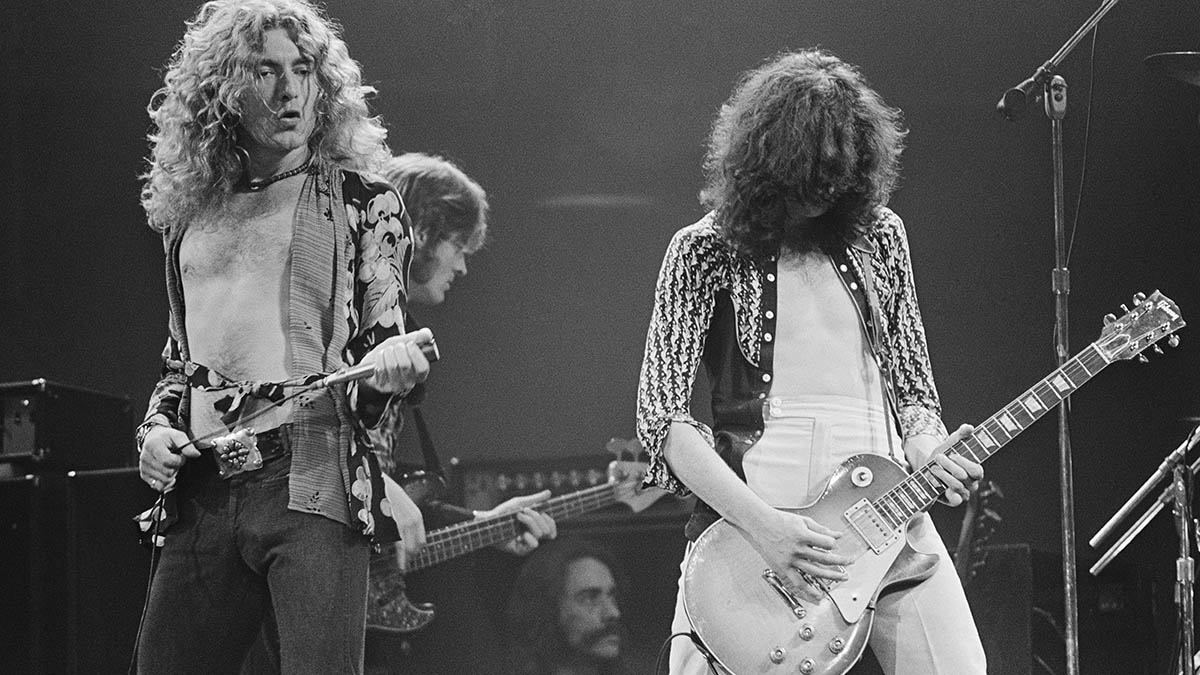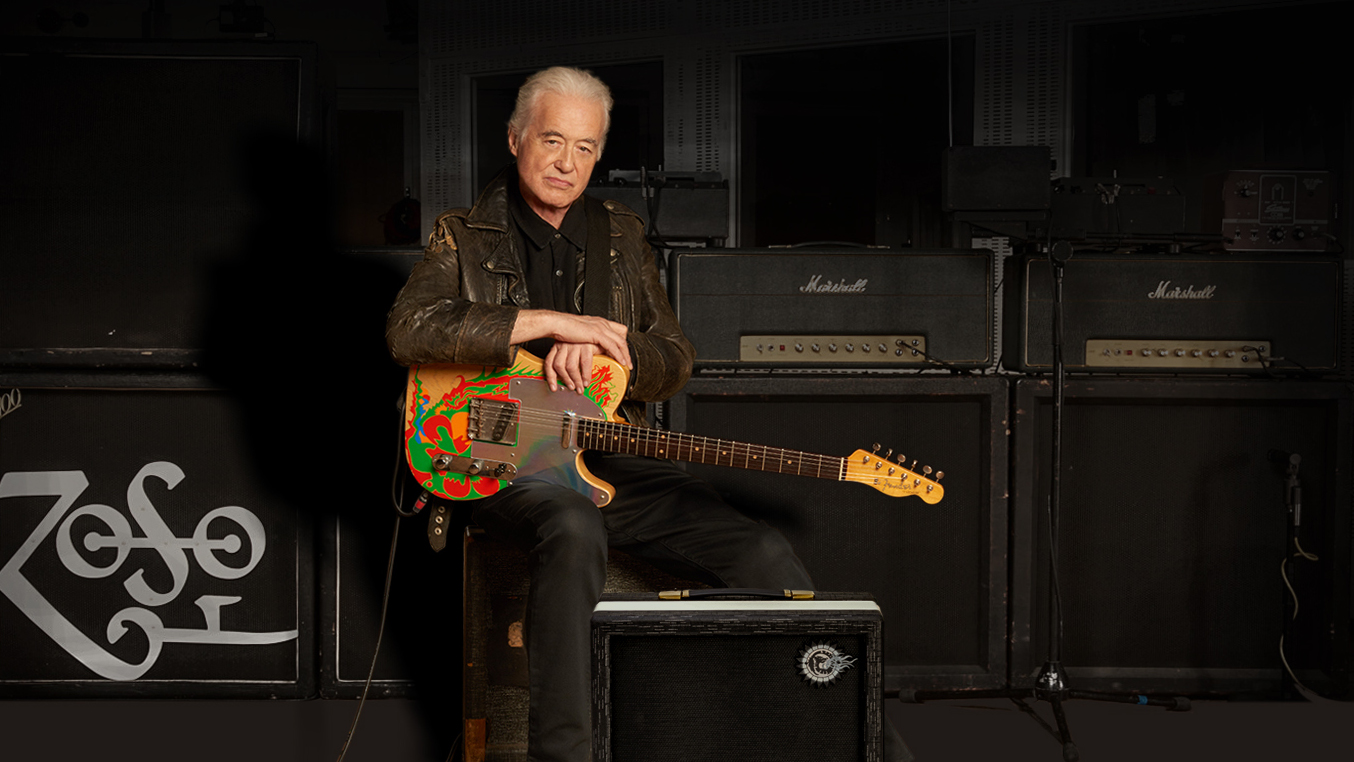In April 2019, The Metropolitan Museum of Art in New York City hosted an exhibition in collaboration with the Rock & Roll Hall of Fame that brought together some of the most famous and culturally significant electric guitars and amplifiers in the history of rock.
The exhibit, Play It Loud: Instruments of Rock & Roll, ran for six months and featured the rigs of rock’s greatest players. Some 130 instruments were on display. Among them were many from Jimmy Page’s collection.
The Led Zeppelin guitarist spoke at The Met's preview event, but he also shot a gear demo video that has just surfaced online, and is essential viewing for any Led Zeppelin gear nut.
Here we have the core components of Page’s rig as it evolved from the early days, the transition from the Yardbirds to Led Zeppelin I, up to the Physical Graffiti era. There is the backline of a Vox UL4120 guitar amp head and Rickenbacker Transonic cabinet, his Marshall JMP Super Leads, the 4x12 speaker cabinet with ‘Zoso’ grill cloth, the Tone Bender MkII and the Vox 95-932011 King Vox-Wah pedal, and more.

But of course, he has to start with his Fender Telecaster, aka the Dragon Telecaster that Jeff Beck gave to Page after pulling up in a sports car outside his house and causing a commotion, that Fender reissued in 2020.
“I love this guitar!” says Page. All these years on and he is barely able to contain his delight at how it sounds through that old modded Supro combo; a combination that formed the basis of his guitar tone on Led Zeppelin I. Page says the Supro and the Tele got on like a house on fire.
“The whole of that first album is done with this guitar, this amplifier, a wah-wah pedal and the overdrive [Tone Bender MkII],” he says. In 2019, the Sundragon, a forensic reproduction of that Coronado was released.

There is a lovely grace note here as Page hits a note and bends it by bending this Tele’s neck, which is of course something all Tele players do, something Page has done a million times – and with more oomph – but nonetheless it’s a heart-in-mouth moment when you consider the historical significance of the guitar.
For many, that Telecaster is the ür-guitar of the Jimmy Page legend, rivalled only by the 1959 Gibson Les Paul Standard that he acquired from Joe Walsh, then of James Gang, in 1969. Page says the introduction was as simple as Walsh insisting he should play it that night.
“He had a Les Paul and he said, ‘Use it. Just play it!’” Page recalls. “I said, ‘What, in the show tonight?’ And he said, ‘Yeah, in the show tonight.”
The rest is history. It became Page’s number one, the singlecut that brought the thunder to Immigrant Song and more, and one that paired particularly well with amps such as the Marshall JMP Super Lead. It became a totem. An Excalibur for a band whose sound and aesthetic had more than a touch of the Arthurian legend to it.
“It was just a real dream to be playing this guitar,” says Page. “I never looked back from that point, really. It’s brought me a lot of luck.”
So, too, did the violin bow. Not only did it give photographers such as Koh Hasebe and Michael Putland an image that would become iconic in the annals of rock photography, it gave Page a different dynamic than just pick and fingers. He was always straining at the leash to pull guitar forward. Here we get a demonstration of the bow and a backstory that explains how Page arrived at the Yardbirds and Led Zeppelin with a feel for the instrument that was far evolved from what his peers were doing.
All those hours cutting tracks on the clock as a session player, borrowing a bow from a violinist and seeing what sounds could come out. Speaking of weird sounds, we get a demonstration of the theremin that was deployed for avant-garde weirdness in the Whole Lotta Love mid-section, but what’s really cool about this is that he uses his famous #3 1969 Deluxe Goldtop that was refinished in Cardinal Red, rerouted for humbucking pickups, and later modded with a Parsons/White B-Bender.
Sadly, Page doesn’t talk about the guitar, though it is nice to see it in action. But it can’t be a Page rig tour with no mention of a double-neck EDS-1275, without which Stairway To Heaven would have been a song greatly diminished in live performances. Again, as with the bow, this would not only give Page the particular sound he needed but would become an indelible image from Led Zeppelin’s pomp.
It was the only option for Page looking to recreate the sound of an acoustic guitar in one channel with a pair of electric 12-string guitars panned left and right.
“It needed to have all these voices of the 12-string and the six-string,” he says. “It became a real sort of working tool in the band and it also became really iconic.”
Other highlights? Well, how about Page playing the opening riff to Kashmir on his legendary black-and-white Danelectro #3021 parked in DADGAD tuning. It doesn't get much cooler. Plus it's also reassuring that the Dano 59 DC is still in production, still awesome, and is an electric guitar you can pick up for under 500 bucks.
Check out Page's rig tour from The Met at the top of the page.







